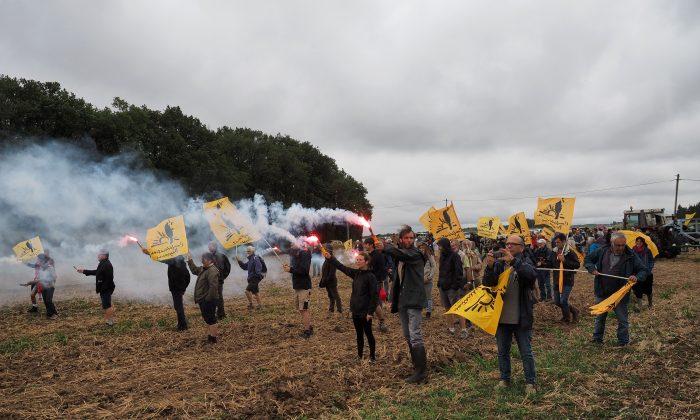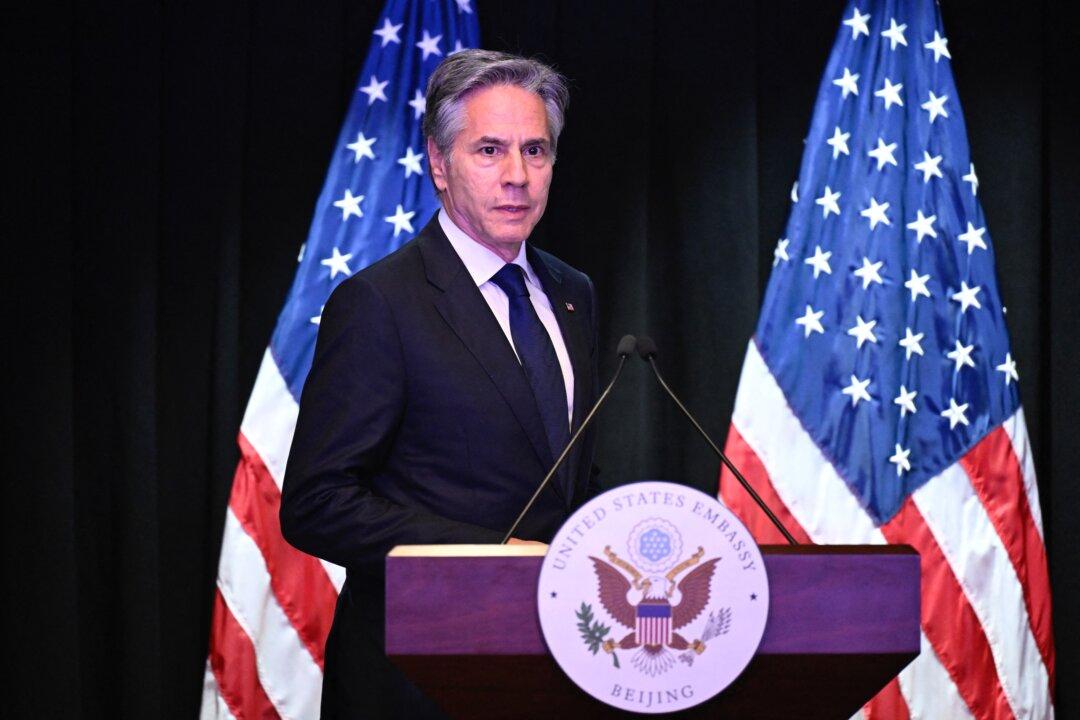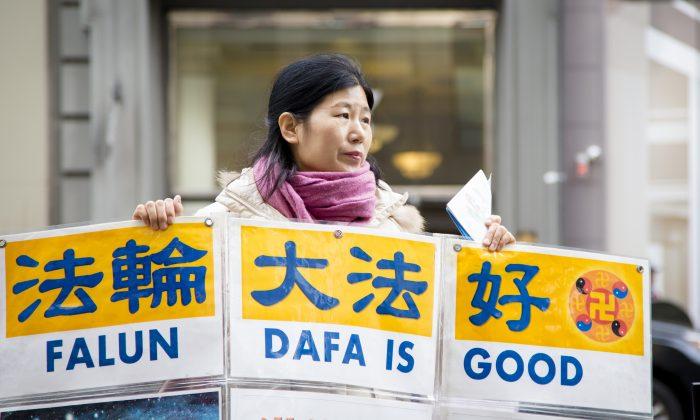China’s spending spree to acquire land and invest in agricultural areas around the world isn’t exactly being welcomed by locals, if a recent protest by some farmers in France is any indication.
Holding banners and flags, about a hundred members of a French agricultural union gathered in protest at a Chinese-owned farm in Murs, in central France, on Aug. 29, according to French newspaper Le Figaro. The farmers, who came from all over the country, gathered to voice their displeasure with the Chinese investors.
“The land is there to support peasant families and produce food. Here, the [Chinese] owners have come to make a business, [and} speculate on the stock market around agriculture by grabbing land,” said Laurent Pinatel, a farmer in the Loire Valley in central France and spokesman for La Confederation Paysanne.
The Chinese buying spree has driven up the price of local farmland, said farmer Jean-Luc Bardel, who added that young people who have graduated from agricultural schools are unable to afford to buy farmland to practice their vocation.
From 2015 to 2016, more than 1,700 hectares (4,200 acres) of agricultural lands in the Indre region were purchased by Hong Yang, a Chinese investment company based in Hong Kong, according to French radio station France Bleu. In 2017, Hong Yang bought 900 hectares in the Allier region. The company primarily grows wheat.
Chinese investors aren’t just interested in buying French farmland. A growing middle class that has taken a liking to French wine has sparked Chinese interest in scooping up French vineyards. According to AFP, 140 chateaux in Bordeaux, out of about 7,000 vineyards in the region, have been bought by Asian investors, many of them Chinese.
The Federation intends to pressure the French government to take action. In February, French President Emmanuel Macron announced that he would tighten restrictions on foreign investors buying up French farms.
“We cannot let hundreds of hectares be bought up by foreign powers without knowing what the aim of these purchases is,” Macron said. According to France Bleu, new agricultural legislation is being prepared and will be announced in early 2019.
‘Going Global’
Chinese investors aren’t limiting the purchase of agricultural land to France. In fact, Chinese national policy is encouraging investment in agricultural sectors around the world.China’s food-security strategy, outlined in China’s 11th Five-Year Plan (2006 to 2010) released in 2006, advocated “going global” to develop foreign land, water, and energy resources for China’s use, according to a report released by the United States Department of Agriculture (USDA) in April.
The concept of going global was emphasized again in a document on agricultural reform issued by the Third Plenum of the 17th National Congress, a once-in-five-years Chinese Communist Party conclave, in 2008.
China’s agricultural investment is closely tied to Beijing’s “One Belt, One Road” (OBOR, also known as Belt and Road) initiative, according to the report, and focuses on countries that are located between China and Western Europe.
OBOR was introduced by Beijing in September 2013, an ambitious plan to establish economic partnerships with more than 60 countries across Asia, Europe, and Africa by building infrastructure projects.
In March, for example, a Chinese delegation visited Nepal to discuss investment opportunities under OBOR, according to Indian newspaper The Times of India. The visit spawned eight agreements announced in June and worth $2.4 billion, with projects in multiple areas, including water resources, fruit cultivation, and farming, according to Indian newspaper Hindustan Times.
The plan to “go global” is reflected in the amount of China’s direct overseas investment in agriculture, forestry, and fishing, which increased to $3.3 billion in 2016 from $300 million in 2009, according to the USDA, citing data from China’s National Bureau of Statistics.
In 2016, more than 1,300 Chinese companies invested in foreign agricultural sectors in over 100 countries, with a total investment value of $26 billion.
In the United States, though, Chinese investment in farmlands and agricultural businesses has been relatively small, according to the USDA, with the exception of the acquisition of Smithfield Foods.
WH Group, the largest meat producer in China, headquartered in central China’s Henan Province, purchased Smithfield, a meat-processing company based in Virginia, for $4.7 billion in 2013.
In Southeast Asia in 2016, China’s total agriculture, forestry, and fishing investment added up to $3.1 billion, according to the USDA, citing data from China’s Ministry of Commerce.
Chinese investment in Cambodia mainly centers around rubber, lumber, and sugarcane. For Malaysia and Indonesia, the palm oil industry has drawn most of the attention from Chinese interests.





